Opinion: My uncle was tossed in a mass grave beside Nazis. He’ll finally be reburied under a Star of David
Editor’s Note: Samantha Baskind is Distinguished Professor of Art History at Cleveland State University and the author of six books, including “The Warsaw Ghetto in American Art and Culture.” She tweets @SamanthaBaskind. The views expressed here are her own. Read more opinion on CNN.
Last spring I learned the unthinkable: My great uncle, 1st Lt. Nathan B. Baskind of the US Army who landed on the beaches of Normandy on D-Day –– and stayed missing in action for almost 80 years –– was buried under three gothic stone crosses in that French region’s German Military Cemetery.
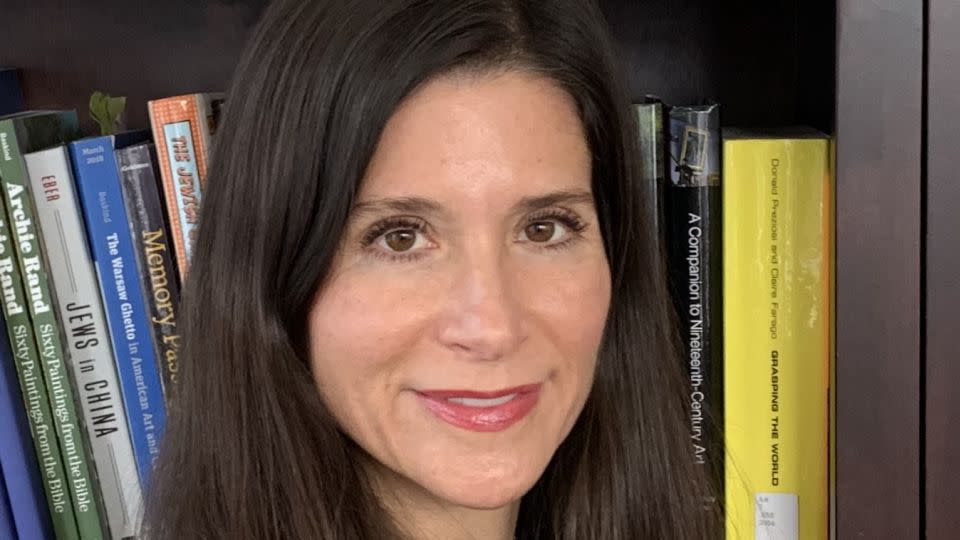
If that was not enough to batter my heart, Nate had been ignobly tossed in a mass grave with 23 Nazis and German soldiers. After the war, 29 more Germans joined him.
Uncle Nate was Jewish. His parents, my great-grandparents, were Eastern European immigrants who settled in Pittsburgh. Dozens of Baskinds left behind died at Auschwitz.
On June 23, 1944, Nate was commanding a platoon of M-10 tank destroyers supporting an attack on an enemy strong point near Cherbourg. He went ahead in a jeep to scout a firing position near a junction reportedly secured by American troops.
Nate’s Individual Deceased Personnel File indicates that his driver returned from the mission seriously wounded. He told the battalion that their jeep had been ambushed and he thought Nate was mortally wounded by machine gun and rifle fire. Later that day, when American troops seized the road junction, a thorough search failed to reveal any trace of Nate or his vehicle.
German war records told a different story: Nate was taken prisoner and died of his wounds at a German Airforce hospital. Soon after, his remains were mingled with those of the enemy.
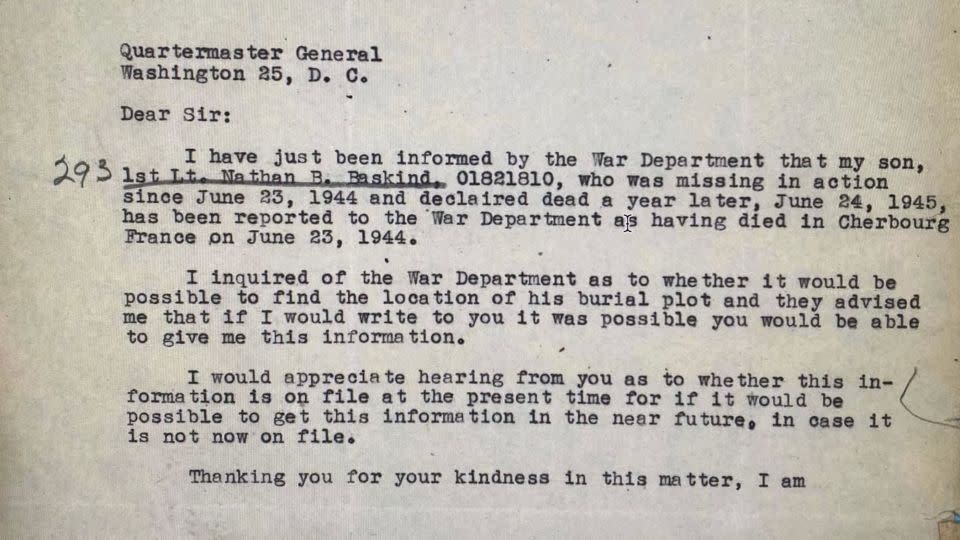
My great-grandfather Abe Baskind wrote to the Army for several years, desperately inquiring about the whereabouts of his son. In July 1949, Lieutenant Colonel W.E. Campbell from the Army’s memorial division informed him that Nate’s remains were unrecoverable. He signed off that letter: “May the knowledge of your son’s honorable service to his country be a source of sustaining comfort to you who gave your loved one under circumstances so difficult that there is no grave at which to pay homage.”
In the late 1950s, the German War Graves Commission (GWGC or Volksbund) disinterred the common grave. When finding one of Nate’s dog tags, his unit patch, and lieutenant bars, officials contacted the US Mortuary Service. The American team could not make a positive identification despite Nate’s distinct dentition. I know this because Nate’s dental files sit in a folder on my desk. Case closed.
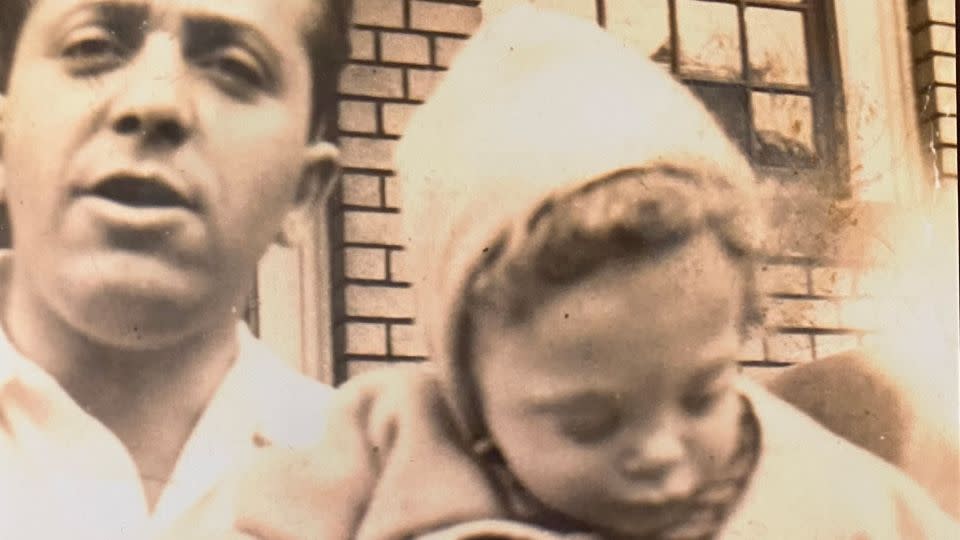
Nate’s fate became part of my fate 13 months ago when I received an email from Operation Benjamin –– an organization unfamiliar to me at the time –– that began: “I’m quite certain this will be the most unusual and potentially profound email you will receive for quite some time.”
Operation Benjamin identifies Jewish GIs from World War I and World War II who were mistakenly buried under crosses in America’s foreign cemeteries, and works with the US government’s American Battle Monuments Commission (ABMC) to replace them with a Star of David.
Following a tip from a genealogist who specializes in German war cemeteries, Operation Benjamin discovered the whereabouts of my great uncle’s remains. His name is on a brass plaque marking that mass grave, embossed alongside Rudolf Bauer, Leonhard Aumüller, and others. The search was renewed, and I was enlisted to lead the family charge. If this had to fall into some Baskind’s lap, I was the one. I am a professor specializing in Jewish American art, I teach the Holocaust and I am an intrepid researcher.
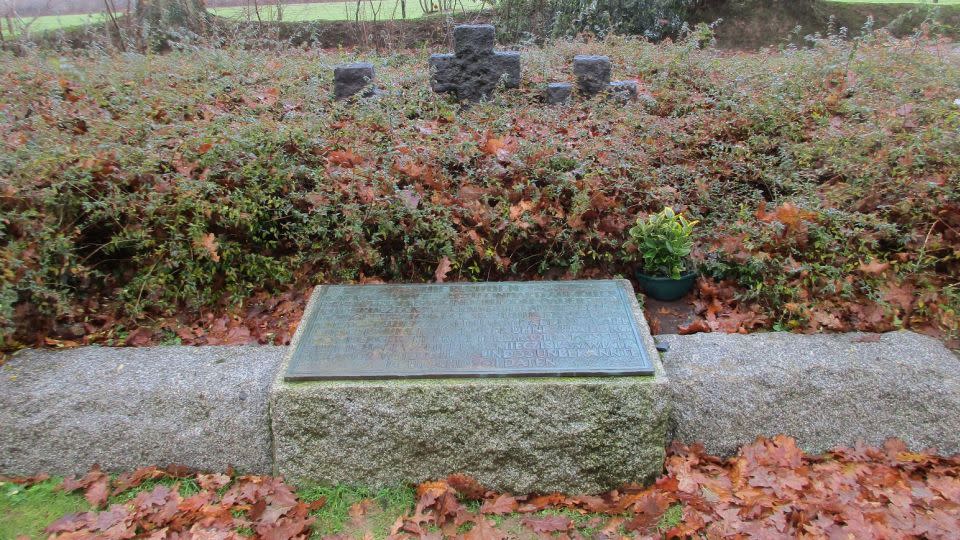
It has been a winding road but, improbably, Operation Benjamin received permission from the French and German governments to disinter the grave. There were thousands of broken bones. Among them were some relatively intact femurs that could possibly be Uncle Nate’s. What was surely a challenge in life –– Nate stood at just 5’5 inches –– was a benefit in death. Samples of five femurs from men of small stature were shipped by diplomatic pouch to Virginia, and tested against family DNA. There was only a gossamer thin chance of a match. We were stunned: A perfect match was made.
On June 23rd, the 80th anniversary of Nate’s death, I will be at Normandy’s American Military Cemetery, burying him with full military honors, under a Star of David with a rabbi presiding. Later that day, I will place a rosette on the Wall of the Missing next to his name. The names of 1,557 Americans are etched on the wall, with rosettes marking the names of those soldiers since recovered. Nate’s rosette will only be the 27th.
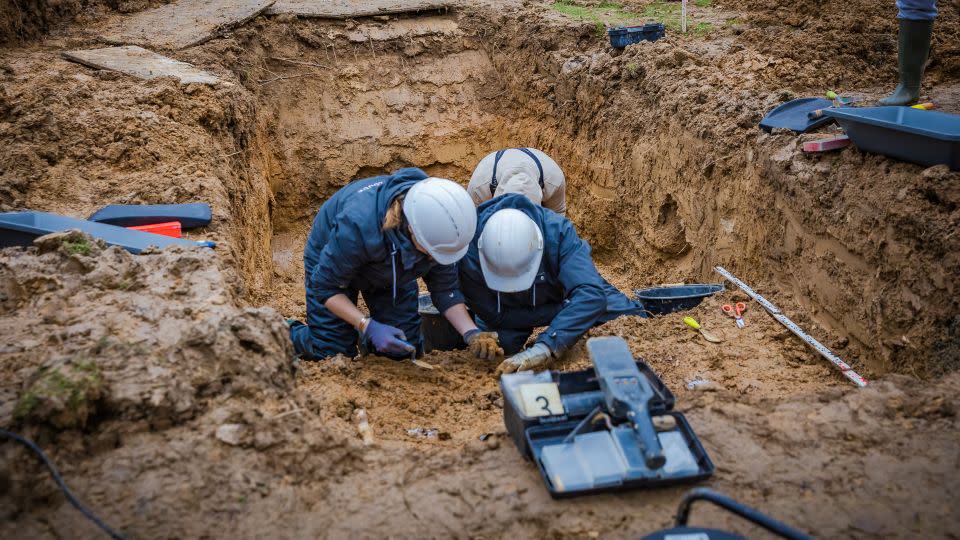
For the past year, my life has intertwined with the uncertainty of Nate’s bones. A shadowy figure in my childhood, all I knew about Nate was a refrain tossed about by my dad: “Your Uncle Nate was a great Jewish American war hero.” But after Operation Benjamin, I woke each morning with the steady ache of his story, imagining him exhausted and bewildered during basic training in Texas before he was shepherded to Northwest Africa, Tunisia, Italy, England, and then France for his final battle.
How cold he must have been on rainy Utah Beach, and how deep his pain after being shot. I imagined my great-grandparents sinking in a quicksand of grief and his twin sister’s seismic despair at hearing the news of his death. How my grandfather, Nate’s older brother, faced the prospect of taking over the family wallpaper business alone.
My teenaged children have lived with the uncertainty too. Once Nate entered our lives, he became the topic of conversation at dinner, and not always a palatable one. “Did they find Uncle Nate’s femur yet, Mom?” my daughter Naomi would ask while eating her salad. “How will they know which bones are his, Mom?” my son Asher would worry over his pasta. We were all unsettled.
And after the match: “Have you picked Uncle Nate’s coffin yet?” Asher wants to know. I had ––Nate will be buried in a polished dark walnut coffin with a crepe interior, a decision I agonized over. Naomi requests yet again: “Can I show Uncle Nate’s Purple Heart to my friends?” She can –– Naomi knows where to find it, and to touch it only after washing her hands.
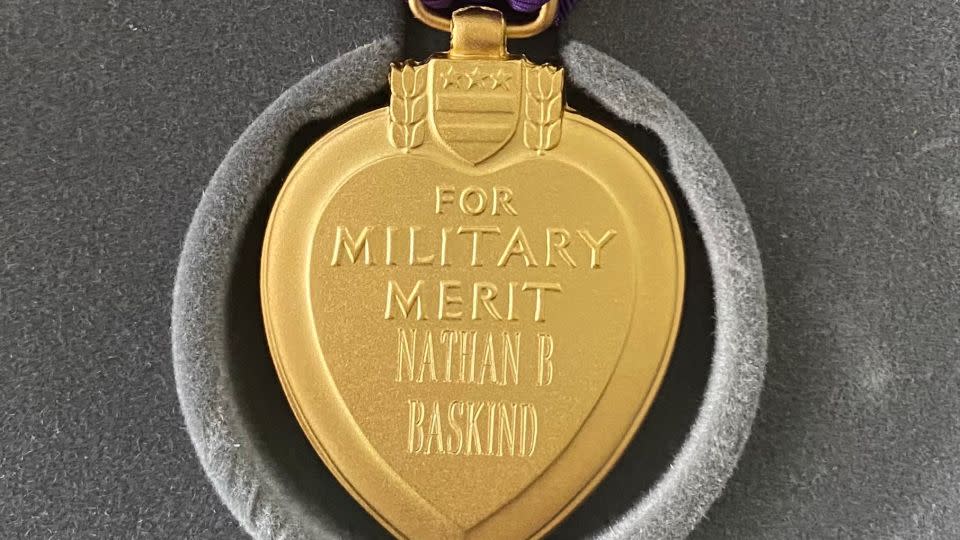
Nate’s Purple Heart was presented to me just before Memorial Day by a captain from the Army’s Casualty Operations who drove two hours to my home. My heart dropped to the floor when I saw it. The medal sits next to his military and dental records on my desk. I plan to file those after Normandy. Then I will place Nate’s Purple Heart in a shadowbox along with the burial flag ceremoniously handed to me before his coffin is lowered into the ground.
With bones, disinterment and DNA finally in the past, I have reflected on this unexpected and unbelievable mission to find Lt. Baskind. Here is what I hope my children have learned and what I will teach my students in the fall.
We are at a moment where democracy cannot be taken for granted. We cannot assume antisemitism is no longer a threat and we cannot just sit by and hope everything will turn out okay. Uncle Nate fought for our freedoms, and his death reminds us that freedom is never free.
Burying the dead is among the most selfless of tasks because the dead can never thank you. It has been the honor of a lifetime.
In our fractured world today, the recovery of Uncle Nate, after 80 years in a German mass grave, represents a triumph of the goodwill of nations. All hope is not lost.
Correction: A previous version of this article incorrectly stated the date that Nathan Baskind was mortally wounded. It was June 23, 1944.
For more CNN news and newsletters create an account at CNN.com

 Yahoo News
Yahoo News 
